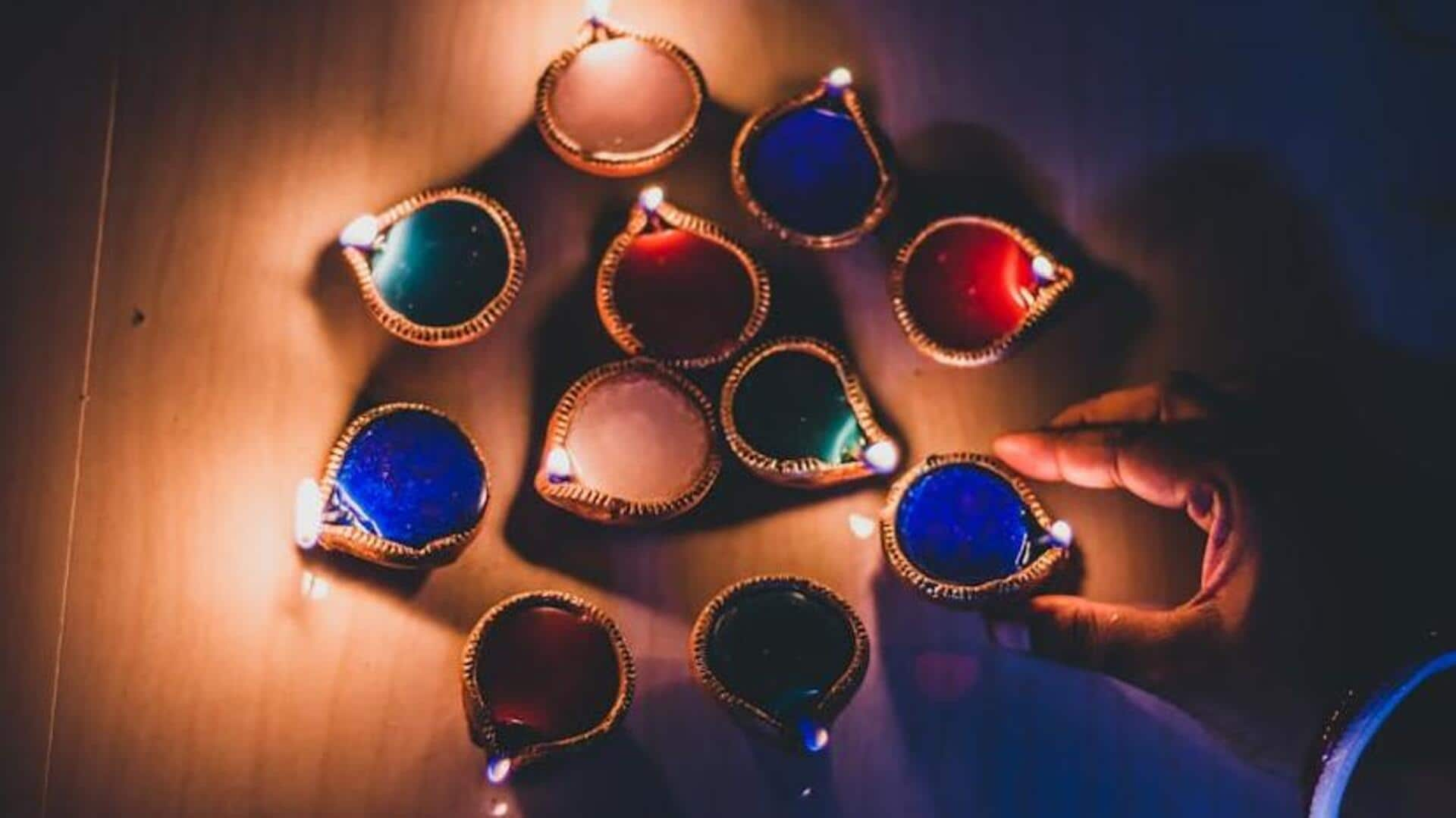
The gleaming diyas: Exploring traditional Indian oil lamps
What's the story
Diyas, India's traditional oil lamps, have illuminated celebrations and spiritual moments for millennia. Crafted primarily from clay and fueled by oil, these modest yet meaningful lamps hold a central place in many Indian festivals and rituals. Read on to discover the cultural importance, diverse designs, how they are crafted, and get tips for using diyas to their fullest potential.
Significance
Symbolism in light
In Indian culture, lighting a diya signifies the act of removing darkness and ushering in light, representing the triumph of good over evil. During Diwali, the festival of lights, millions of such lamps are illuminated across households and temples. It is not merely an act of lighting but a ritual, a devotion to the divine, and an invitation to welcome prosperity and happiness into one's home.
Varieties
A variety of shapes and colors
Diyas come in all shapes, sizes, and colors. The traditional diya is simple, but modern artisans turn them into works of art. They create beautiful terracotta lamps decorated with vibrant colors, mirrors, and even semi-precious stones. Prices start at just ₹10 for basic ones, but can go well beyond ₹500 for elaborate designs.
Making process
Crafting the lamps
Making clay diyas entails kneading the clay until it's soft and malleable, then molding it by hand or on a potter's wheel. The formed clay is dried in the sun and then baked in a kiln at high temperatures to harden it. Lastly, it can be painted or decorated. This ancient artistry has been kept alive and transmitted across generations by potters all over India.
Usage tips
Lighting up right
To properly light a diya: fill it three-quarters full with oil (traditionally mustard oil or ghee is used); place a cotton wick inside, ensuring one end touches the bottom while the other end sticks out a bit; light the protruding end. Always place diyas on stable surfaces and away from anything that can easily catch fire, like curtains or paper decorations, for safety.